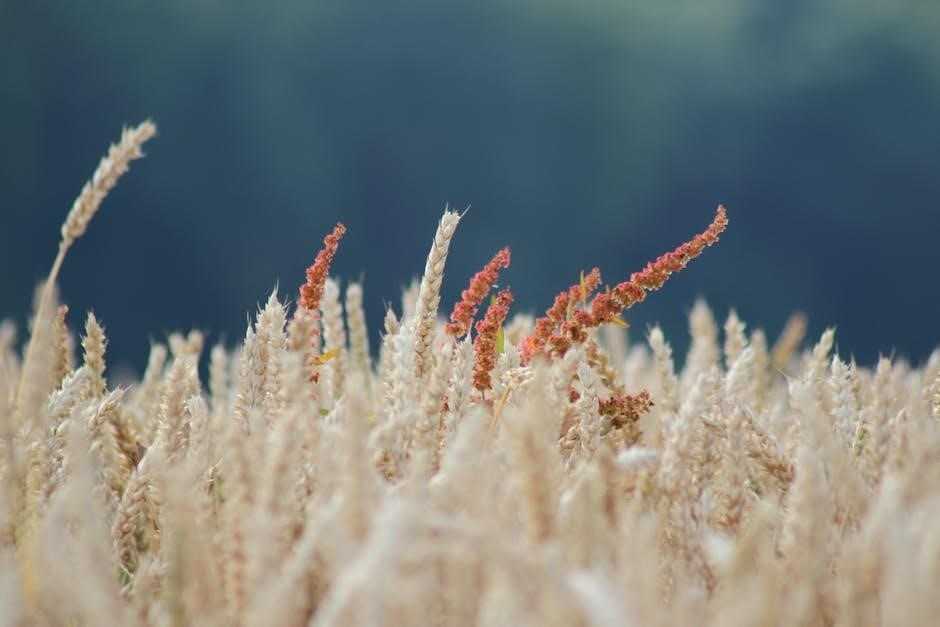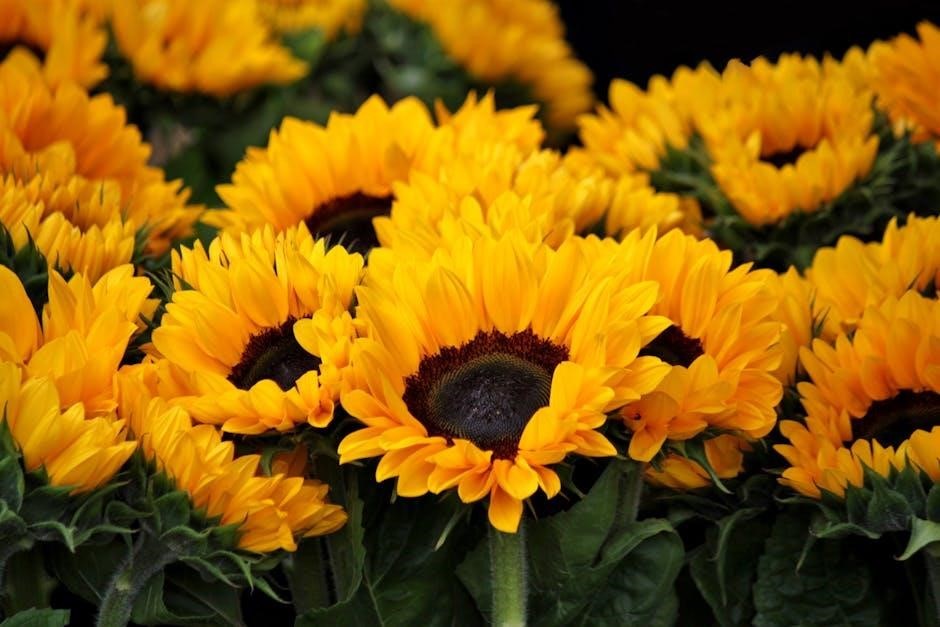Hallucinogenic plants are surveyed in a Golden Guide, exploring role in societies from early times to present, with
unique
cultural significance and physiological effects described.
Definition and History of Hallucinogenic Plants
Hallucinogenic plants have been used for centuries by various cultures around the world for spiritual, medicinal, and ceremonial purposes. The definition of hallucinogenic plants refers to the unique properties of these plants to alter perception, thought, and mood. Historically, these plants have played a significant role in shaping the cultural and social practices of many societies. From the old world to the new, hallucinogenic plants have been used in various forms, including rituals, ceremonies, and traditional medicine. The history of hallucinogenic plants is complex and multifaceted, with different cultures developing their own unique relationships with these plants. Understanding the definition and history of hallucinogenic plants is essential for appreciating their significance and impact on human societies. The study of hallucinogenic plants has been an ongoing endeavor, with researchers continuing to uncover new information about their properties and uses.
Cultural Significance of Hallucinogenic Plants in Primitive and Civilized Societies
The cultural significance of hallucinogenic plants in primitive and civilized societies is a fascinating topic, with these plants playing a crucial role in shaping the social and cultural practices of many communities. In primitive societies, hallucinogenic plants were often used in rituals and ceremonies to communicate with the spirit world and to seek guidance and wisdom. In civilized societies, these plants have been used for recreational and medicinal purposes, with many cultures developing their own unique traditions and customs surrounding their use. The cultural significance of hallucinogenic plants can be seen in the many myths, legends, and stories that have been passed down through generations, highlighting their importance and revered status in many societies. The use of hallucinogenic plants has been a common thread throughout human history, with many cultures sharing a deep respect and appreciation for their power and significance;

Classification of Hallucinogenic Plants
Types of Hallucinogenic Plants and their Characteristics
Hallucinogenic plants have diverse characteristics, with species ranging from flowering plants to fungi, each with unique properties and effects. The Golden Guide provides an overview of these plants, including their historical uses and cultural significance. Various types of hallucinogenic plants are discussed, such as those used in ancient rituals and ceremonies, as well as those used for medicinal purposes. The characteristics of these plants are described in detail, including their chemical composition and physiological effects. The guide also explores the different ways in which these plants have been used throughout history, from spiritual and religious practices to recreational and medicinal uses. By examining the various types of hallucinogenic plants and their characteristics, readers can gain a deeper understanding of these complex and fascinating organisms. The Golden Guide serves as a comprehensive resource for those interested in learning more about hallucinogenic plants.
Evolution of Hallucinogenic Plants and their Distribution
The evolution of hallucinogenic plants is a complex and fascinating topic, with species adapting to various environments and ecosystems. According to the Golden Guide, the majority of hallucinogenic species occur among highly evolved flowering plants and fungi. The distribution of these plants is widespread, with species found in diverse regions and climates. The guide provides an overview of the geographical distribution of hallucinogenic plants, including their native habitats and ranges. By examining the evolution and distribution of these plants, readers can gain insight into their unique characteristics and properties. The Golden Guide serves as a valuable resource for understanding the history and development of hallucinogenic plants, and their spread across the globe. The distribution of these plants has been influenced by various factors, including human migration and trade, and has played a significant role in shaping their cultural and medicinal uses.

Physiological Effects of Hallucinogenic Plants
Plants affect human physiology, altering perception and consciousness, with
varied
effects described in the Golden Guide.
Effects of Hallucinogenic Plants on the Human Body
Hallucinogenic plants have profound effects on the human body, altering perception, thought, and mood, with varied physiological responses, including changes in heart rate and blood pressure, as described in the Golden Guide, which provides a comprehensive overview of the effects of these plants on human physiology, including the impact on the nervous system and brain function, and the potential risks and consequences of using these substances, with information on the different types of hallucinogenic plants and their unique effects on the human body, and the importance of understanding the cultural and historical context of their use, and the need for further research on the medicinal properties and potential therapeutic applications of these plants, and the conservation efforts to protect these species and their habitats, and the role of education and awareness in promoting responsible use and appreciation of hallucinogenic plants.
Risks and Consequences of Using Hallucinogenic Plants
The use of hallucinogenic plants carries significant risks and consequences, including adverse psychological and physiological effects, as outlined in the Golden Guide, which emphasizes the importance of caution and responsible use, and notes that the majority of hallucinogenic species occur among highly evolved flowering plants, and that no hallucinogenic species are yet known from other branches of the plant kingdom, and that the guide provides illustrations and historical backgrounds on the people who used these plants, and that the risks and consequences of using hallucinogenic plants can be mitigated through education and awareness, and that the Golden Guide serves as a valuable resource for understanding the potential dangers and consequences of using these substances, and that it is essential to approach their use with caution and respect, and to be aware of the potential long-term effects on mental and physical health.

Medicinal Uses of Hallucinogenic Plants
Medicinal uses of hallucinogenic plants are explored in the Golden Guide, featuring history and modern applications, with traditional uses described in the book.
Traditional and Modern Medicinal Applications of Hallucinogenic Plants
Hallucinogenic plants have been used for centuries in traditional medicine, with various cultures utilizing them for spiritual, medicinal, and ceremonial purposes, as described in the Golden Guide.
The book provides an overview of the history of medicinal uses, including ancient societies and their practices, and explores modern applications, such as conservation initiatives and pharmaceutical research.
The Golden Guide features comprehensive information on the traditional and modern medicinal applications of hallucinogenic plants, including their chemical compounds and potential benefits, making it a valuable resource for researchers and enthusiasts alike.
With its unique approach to the subject, the Golden Guide offers a fascinating look at the role of hallucinogenic plants in medicine, from traditional practices to modern discoveries, and their potential to shape the future of healthcare.
The guide is an essential tool for understanding the complex relationships between hallucinogenic plants, culture, and medicine, and their significance in human history and modern society, with its detailed descriptions and historical backgrounds.
Conservation Initiatives for Hallucinogenic Plant Species
The Golden Guide emphasizes the importance of conservation initiatives for hallucinogenic plant species, which are often threatened by habitat destruction and over-harvesting.
These initiatives aim to protect and preserve the natural habitats of these plants, ensuring their continued availability for medicinal and cultural purposes.
The guide highlights the need for sustainable harvesting practices and the development of conservation strategies, such as ex situ conservation and community-based conservation.
By supporting conservation efforts, individuals can help protect the world’s most valuable and endangered hallucinogenic plant species, preserving their potential to benefit human health and well-being.
The Golden Guide provides a comprehensive overview of conservation initiatives, offering a valuable resource for researchers, policymakers, and enthusiasts working to protect these unique and valuable plant species, and their habitats, for future generations.

and Future Perspectives
The Golden Guide to hallucinogenic plants provides a comprehensive overview of their role in human societies, from ancient times to the present.
This guide has explored the cultural significance, physiological effects, and medicinal uses of these plants, highlighting their importance in various cultures and traditions.
As we look to the future, it is essential to consider the potential benefits and risks associated with hallucinogenic plants, and to develop strategies for their sustainable use and conservation.
By doing so, we can ensure that these unique and valuable plant species continue to thrive, and that their potential to benefit human health and well-being is fully realized.
The Golden Guide serves as a valuable resource for researchers, policymakers, and enthusiasts, offering a foundation for further study and exploration of the fascinating world of hallucinogenic plants and their potential applications.